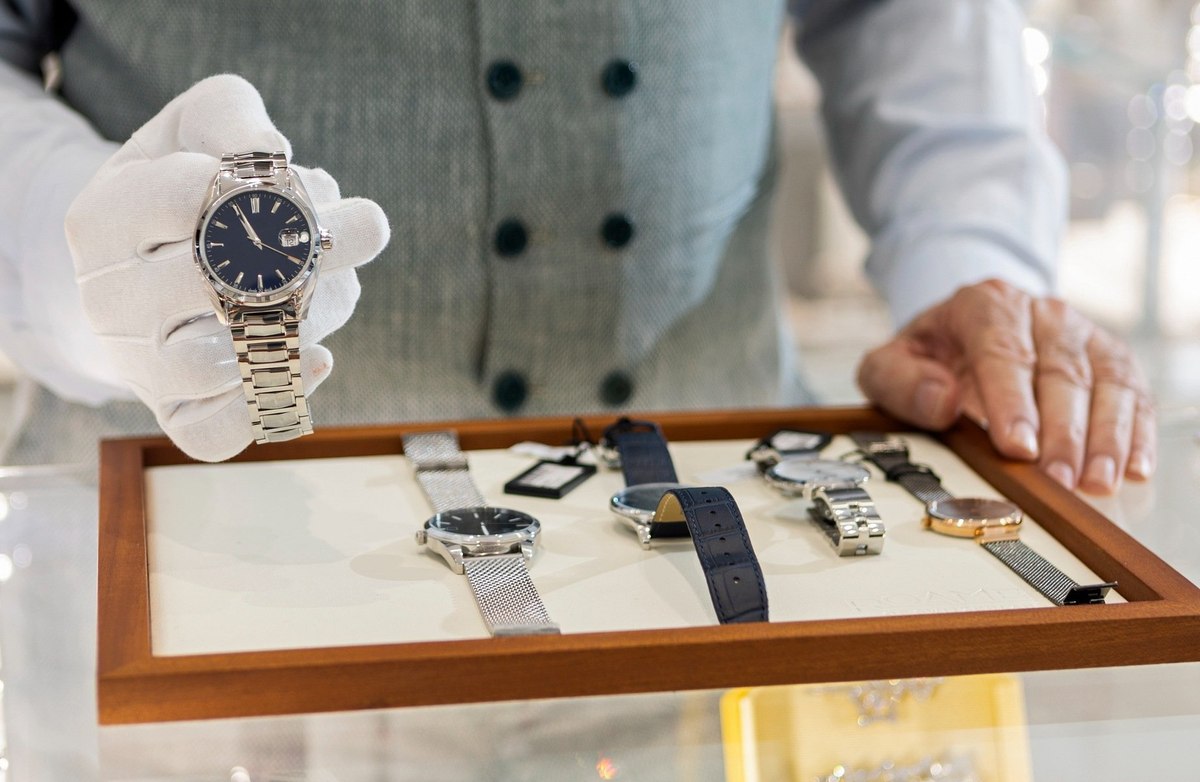
Luxury living - How is demand for watches and jewelry around the world shaping up this year?
Watch brands had a great year in 2022, but what does the global appetite for luxury watches look like this year? And where does luxury jewelry stand? Here’s what data from a recent YouGov survey, conducted across 18 international markets, reveals.
Of all the luxury categories consumers indicate they are likely to buy, clothes or shoes (31%) and meat, fruit or vegetables (30%) rank the highest. About one in seven consumers indicate they would purchase jewelry (14%) and an identical share see themselves purchasing luxury bags, wallets or cases (14%). One in eight consumers (12%) are interested in luxury watches, one of the lowest of all categories listed.
Polling data shows that a significant share of global respondents are not interested in purchasing any luxury products (40%).
The data shows that consumers in UAE (35%) along with those in the APAC region are most likely to consider the purchase of luxury jewelry. India and Indonesia (36% each) register the highest share of consumers who plan on purchasing luxury jewelry in the next 12 months. While Australia (15%) slightly outpaces the global average, it registers one of the lowest proportions of consumers in APAC, second only to Singapore (11%).
Consumers in western markets show a lesser affinity for luxury jewelry with nearly all markets registering lower than the global audience, except Poland (16%).
The Nordics markets show slightly higher interest in luxury jewelry – Denmark (12%) and Sweden (10%). But fewer than one in ten consumers in other European countries say they plan to buy expensive jewelry – Italy (8%), France (7%) and Germany (6%). In Great Britain, only one in 20 consumers say they are considering such a purchase (6%), the lowest of all markets surveyed.
North American consumers are divided in their plans. A similar proportion of consumers in Mexico (12%) and Canada (10%) show an interest. However, it’s consumers in the US who show the least interest in premium jewelry, registering around one in 20 consumers (6%).
Overall, watches are one of the least popular products consumers would consider purchasing in the luxury category. However, when we look at the data individually in 18 markets, three countries significantly outpace the global average. Consumers in India (37%) are three times more likely than global respondents to say they plan to buy a luxury watch in the next 12 months.
UAE follows closely behind with 33% of consumers considering the purchase of luxury watches. Indonesians (27%) are more than twice as likely as the global audience to consider purchasing premium watches.
While 14% of consumers in China and 13% in Hong Kong say they plan to purchase luxury watches, the proportion drops among consumers in Singapore (10%) and Australia (10%), the only two markets in APAC to register below the global average.
Mexico is the only country in North America where consumers are as likely as global respondents to consider purchasing luxury watches (12%). The figure is halved among Canadians (6%) and drops to fewer than one in 20 consumers in US (4%).
Denmark registers 7% of consumers while 6% of Swedes say they plan to buy luxury watches. But it is the figure in Great Britain that attracts the most attention. Fewer than one in 25 Britons (3%) plan to buy luxury watches, the lowest of all 18 markets surveyed.
Explore our living data – for free
To receive monthly insights about the retail industry register here.
To read YouGov’s latest intelligence on the retail sector explore here.
Make smarter business decisions with better intelligence. Understand exactly what your audience is thinking by leveraging our panel of 20 million+ members. Speak with us today.
Methodology: YouGov Surveys: Serviced provide quick survey results from nationally representative or targeted audiences in multiple markets. The data is based on surveys of adults aged 18+ years in 18 markets with sample sizes varying between 512 and 2034 for each market. All surveys were conducted online in February 2023. Data from each market uses a nationally representative sample apart from Mexico and India, which use urban representative samples, and Indonesia and Hong Kong, which use online representative samples. Learn more about YouGov Surveys: Serviced.
Getty Images